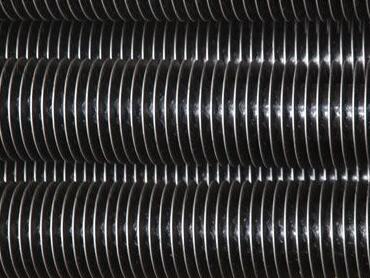Lord Fin Tube--How to choose finned tube?
How to choose finned tube?
Choosing finned tubes involves considering several factors to ensure they meet the specific needs of your application. Finned tubes are often used for heat transfer in various industries like HVAC, refrigeration, power plants, and more. Its essential to consider factors such as application requirements, heat transfer needs, material compatibility, and manufacturing constraints. Ensure that the selected finned tubes can effectively transfer heat and maintain stable performance and reliability over long-term use.
1. Heat Transfer Requirements:
Determine the heat transfer rate you need for your application. Different types of fins offer varying levels of heat transfer efficiency. Some applications require high heat transfer rates, while others may need more moderate levels.
2. Material Compatibility:
Choose finned tubes made from materials that are compatible with the fluids or gases that will pass through them. This ensures corrosion resistance and prevents damage to the tubes over time.
3. Finned Tube Type:
There are different types of finned tubes, such as extruded, helical, and embedded fins. Each type has its advantages and is suitable for specific applications. Consider the design that best suits your heat transfer needs.
4. Tube Size and Dimensions:
The size and dimensions of the finned tubes should match the requirements of your system. Ensure that the length, diameter, and fin dimensions fit your setup.
5. Finned Geometry:
Fins can have different shapes, sizes, and arrangements. Some common fin shapes include rectangular, circular, and oval. The spacing and height of the fins also impact heat transfer performance. Choose the geometry that optimally suits your heat exchange needs.
6. Environmental Conditions:
Consider the operating environment of the finned tubes. Factors such as temperature, pressure, humidity, and exposure to corrosive elements will impact material selection and performance.
7. Efficiency and Maintenance:
Evaluate the maintenance requirements of the chosen finned tubes. Some fin designs may be more prone to fouling or clogging, which can reduce efficiency over time. Choose a design that is easy to clean and maintain.
8. Cost:
Balance your budget with the quality and performance you need. Different finned tube materials and designs come at various price points. Consider the long-term benefits of efficient heat transfer against the initial investment.
9. Installation:
Check if the chosen finned tubes are easy to install and integrate into your system. Compatibility with existing equipment and installation procedures is important.
10. Supplier Reputation:
Purchase finned tubes from reputable suppliers or manufacturers known for producing high-quality products. Look for reviews, certifications, and customer feedback to ensure reliability.


